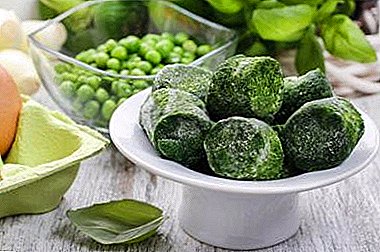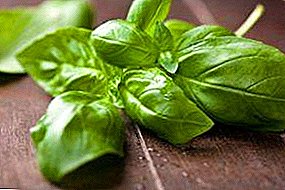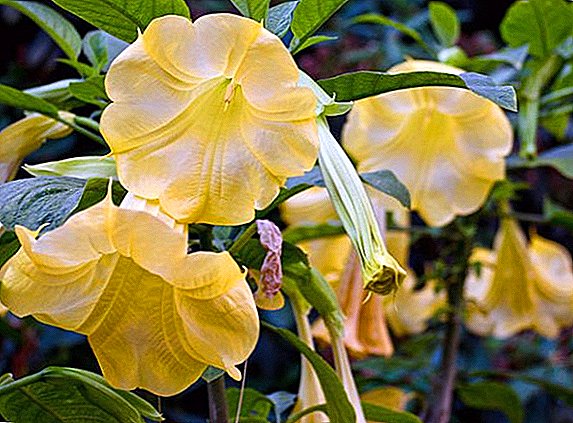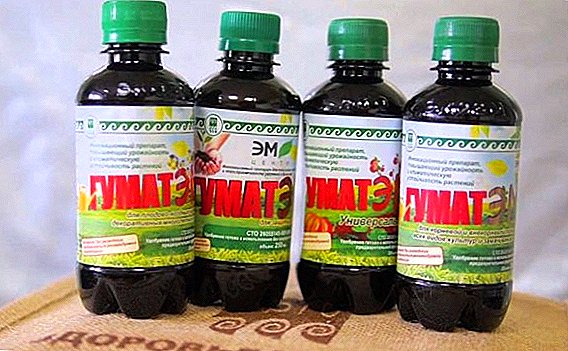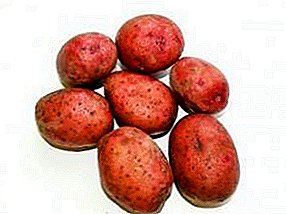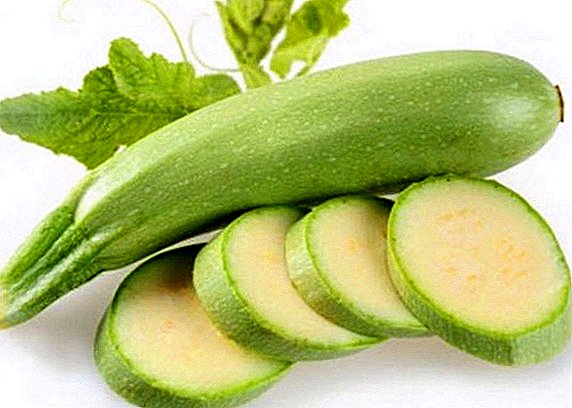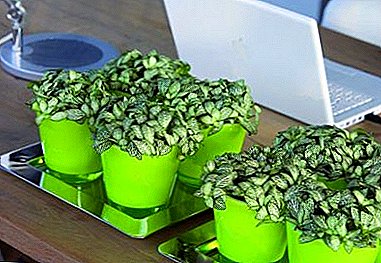
If you plant decorative leafy home flowers, then Fittonia is the plant for you.
Its colorful leaves with colorful veins will decorate any apartment, and with proper maintenance it will grow perfectly for you to the joy.
General description of the flower
"Fittonia" - a perennial low herbaceous plant. It belongs to the Akkanta family, the birthplace of the flower - Peru.
Probably got its name in honor of the English biologists Elizabeth and Sar Fitton, who in the late 19th century published the work "Conversations about the botany."
Stem creeping, pubescent.
The flowers are small, sessile, collected one by one, the leaves of the plant have a very unusual color.
"Fittonia" is grown for the sake of beautiful foliage of various shades. Variegated varieties with a pattern look very impressive.
Views from the photo
“Fittonia” has several varieties depending on leaf color and veins.
"White Anna"
Very gentle and sophisticated look. The leaves are green with silver-white veins, along the edges of the border of emerald hue.
The photo shows the Fittonia White Anna plant with proper care at home:
Verschaffelt
The shoots are recumbent, are close to the surface of the soil, with short hairs. Leaves in the shape of an ellipse or egg, rounded at the base, up to 10 centimeters. They have a dark green color with carmine-red veins.
The photo shows the Fittonia Vershaffelt plant with proper care at home:

"Skeleton"
The leaves are oval-shaped, velvety, have an olive tinge with streaks of pink-red color. With some lighting, a glow effect is created.
The photo shows the plant "Skeleton" with proper care at home:

"Jozan"
The leaves are dark green or emerald green with an olive edge on the edges.
The photo shows the plant "Jozan" with proper care at home:

"Belozhilchataya"
Outwardly very similar to White Anna, but does not have a border around the edges of the sheet. Her white streaks are thicker than Anna.
The photo shows the plant "Belozhilchataya" with proper care at home:

Home care
How to care for the indoor flower "Fittonia"? Quite unpretentious in the care, prefers high humidity, abundant watering and bright diffused light.
She likes the constant spraying and the flow of fresh air, but without drafts.
And the brightness of the leaves and the pattern will give shading from the bright rays of the sun.
Actions after purchase and pruning
 After buying Fittoni, it is advised to immediately change the soil.
After buying Fittoni, it is advised to immediately change the soil.
A pot to take wide, but not tall.
Water a lot, but after drying the soil.
Then it is transplanted in the spring after 2 years.
Do it carefully, without damaging the roots.
Representatives of this species for good growth need pruning. Make it to form a lush crown. It is also advised to cut dry and wilted leaves.
Lateral processes are trimmed as necessary.
Watering
Watering "Fittonia" should be extremely warm defended water. In spring and summer, the soil should remain wet, but without drying between waterings.
In winter, watering is done a couple of days after the soil dries out.
Landing
For planting soil advised to take fertile, consisting of turf, sand and peat with the addition of coniferous soil.
At the bottom of the pot sprinkle expanded clay, up to 1/3 of the pot, it will be good drainage.
Transfer
Transplantation is carried out once a year, more often in the spring. Take a pot a little more than it was.
Important: for the growth of new shoots are recommended to remove old and dried leaves.
Fitonia is transplanted in the usual way. The pot is taken small - it has a shallow root system.
Temperature
 Fittonia is quite thermophilicIt tolerates moderate temperature conditions without sharp fluctuations and drafts.
Fittonia is quite thermophilicIt tolerates moderate temperature conditions without sharp fluctuations and drafts.
Do not put it in the battery or radiator.
In winter, in a room where Fittonia stands, it should be no lower than 18 degrees; in a warm time, it will feel good at a temperature of 22-25 degrees.
Important: It is forbidden to keep the plant on the balcony even in the summer!
Lighting and humidity
"Fittonii" suitable bright diffused light. It is better to put it on the sunny side of the apartment, but avoid the direct rays of the sun. Ideal flower fit western and eastern windows. Lack of light leads to the stretching of the stem.
"Fittonia", as a resident of the tropics, prefers conditions with high humidity. This is one of the main points of care for her.
It is recommended to carry out everyday spraying, especially in the dry summer.
Top dressing and fertilizer
Feed advised from April to August. For this purpose a fine solution of complex fertilizer is perfect. Feed advise advised every two weeks.
Important: Use a well-diluted fertilizer solution for the plant!
Breeding
 There are three types of breeding at home:
There are three types of breeding at home:
- Dividing during transplantation - used more often;
- Cuttings - can be carried out at home at the correct temperature conditions and specially selected soil and humidity;
- Layering.
The division during transplantation is as follows.
Adult "Fittonia" is divided into several parts, carefully separated roots, while trying not to damage them. Then they are planted in the ground, watering abundantly.
Reproduction by cuttings
Conduct most often in early spring. Take shoots of last year with 2-4 leaves 6-8 centimeters long, put them in a container with sand and cover with a jar of glass.
You can root cuttings in ode, then its height in the bank should be only 1 centimeter for saturation with air. After 1.5 months, the cuttings acquire roots at a temperature of 25-28 degrees.
Then shoots with roots are placed in pots in the soil of sod, coniferous soil with peat and sand.
Layering
When breeding by layering part of the stem lying on the ground, free from leaves and sprinkle with earth. When the roots are planted in a separate pot.
Benefit and harm
"Fittonia" is not poisonous, and can not harm either children or animals. It cleans the air well, moistening it. It is believed that the flower relieves irritability and tension in relationships in the family.
Diseases and pests
 Caring for a plant on average does not cause much trouble, you should only follow certain rules:
Caring for a plant on average does not cause much trouble, you should only follow certain rules:
- Lack of moisture should be avoided - the leaves may turn yellow;
- With an excess or lack of minerals, the edges of the leaves turn brown;
- When the air is too dry, the leaves shrivel;
- When overmoistening or overcooling, the stem may begin to fade or even rot;
- The main pests are worms, aphids, scale insects and spider mites.
"Fittonia" - a short, but very decorative plant. She divorced for the sake of beautiful leaves with colored veins. It grows quite quickly, but requires compliance with a sufficient level of humidity and constant pruning.


